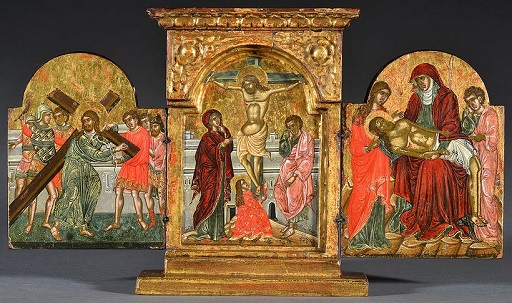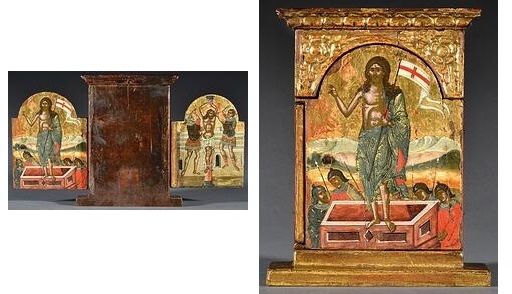3.3 Secular I: Icon in public and private spaces
While the templon/iconostasis and the proskynetaria are the main location for panel-painted icons within a church, they also hold an important position for the Orthodox faithful within their secular surroundings, both public and private. At home, at least one room (usually the master bedroom) will have an icon of either Christ or of the Virgin and Child on one of its walls. Additional icons may be found in the remaining bedrooms and in the living room. The choice of the saintly person(s) is usually based on the protector saint(s) of the owner (i.e., the saints after whom they are named: for example, a male named Nicholas is highly likely to have an icon of Saint Nicholas; a female named Catherine is highly likely to have an icon of Saint Catherine). In fact, icons can be placed in any part of an Orthodox household, except the bathroom. It is very important to remember that their primary role is distinctly different from any other ordinary panel painting (e.g., a landscape) with which they may share space: their presence is linked to watching over and protecting the household and its members. This applies equally to the plain ones, as well as those with more complex finishing, such as metal revetments (commonly made of silver), or those with elaborate frames (Figure 8).


While an icon’s decorative function within a household is secondary, this does not mean that icons are not valued for the artistic quality they display – although outspoken appreciation of icons for their artistic quality and value was a later phenomenon, directly related to the European Renaissance. In fact, the shift of the status of the artist in the Renaissance, with the latter acknowledged as the creative force behind artistic production, also changed the prevailing and long-standing anonymity of the Byzantine artist into eponymous appreciation. Fame for the majority of Byzantine artists was restricted to God: they were content with the knowledge that He ‘[Lord] knows their names’ – a phrase which describes a belief that, to a certain extent, may account for the shortage of named artists in Byzantium. This, however, began to change with the Renaissance appreciation of artists with an outreach even to Byzantine icon painters who started signing their work (Lymberopoulou, 2007c, p. 175).
